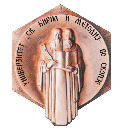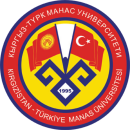
International Conference on Eurasian Economies
1-3 July 2014 – Skopje, MACEDONIA
Paper detail
Paper ID : 849
Status : Paper published
Language : English
Topic : Macroeconomics
Presenter: Prof. Dr. Özlen Hiç
Session : 5A Macroeconomics
Anti-Keynesian Views: Fiscal and Monetary Guidelines
Anti-Keynesian Views: Fiscal and Monetary Guidelines
- Prof. Dr. Özlen Hiç (İstanbul University, Türkiye)
- Prof. Dr. Ayşen Hiç Gencer (Istanbul Beykent University, Türkiye)
Abstract
In this article, we will cover the main anti-Keynesian views and macroeconomic systems that arose in the post Keynes period as well as their fiscal and monetary policy guidelines. As is known, the early Classical economists introduced a macroeconomic system based on the Quantity Theory and Say’s Law resulting in automatic full-employment equilibrium; and finally after 1929-1934 Great World Depression, the Keynesian System was introduced as a “revolution” (Keynesian Revolution) in theory and practice. As a result of the Keynesian policies implemented, European countries and the United States not only got over the Great World Depression but also in the years following the World War II, they have observed a fast and stable growth for a long time. Moreover, cyclical fluctuations have been controlled to a great extent. Even so, at the stage when the Keynesian System was introduced, anti-Keynesian views and macroeconomic systems were immediately introduced. Intense academic discussions between advocates of these views and the Keynesian economists have continued up until today. Meanwhile, many economists such as J.R. Hicks, R.F. Harrod, N. Kaldor, M. Kalesci, A.W. Philips, A. Hansen, P.A. Samuelson, E. Domar, J. Tobin, R. Solow, A.M. Okun, W. Helier, G. Ackler, F. Modigliani, and R. Musgrave and many others have developed and defended the Keynesian System from different aspects. We can characterize significant anti-Keynesian views and macroeconomic systems as the “Counter-Revolution”.
JEL codes: B13, B22, B20
Hiç, Özlen, Gencer, Ayşen Hiç (2014). "Anti-Keynesian Views: Fiscal and Monetary Guidelines" in Proceedings of International Conference of Eurasian Economies 2014, pp.173-181, Skopje, MACEDONIA.
DOI: https://doi.org/10.36880/C05.00849




